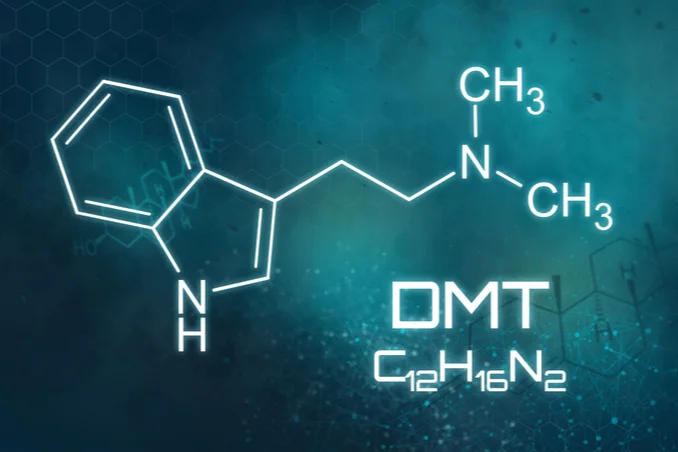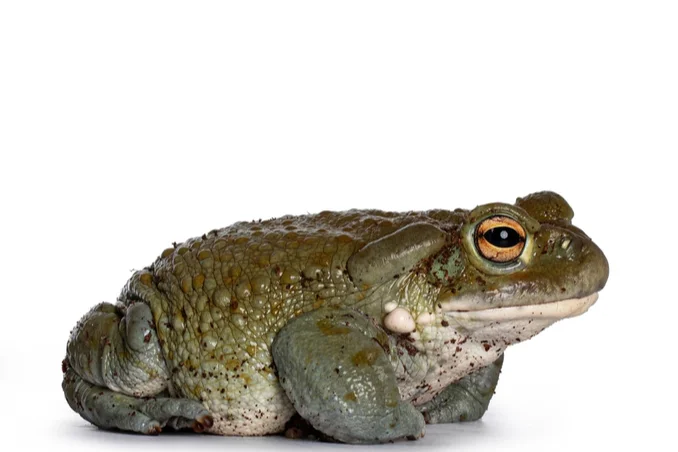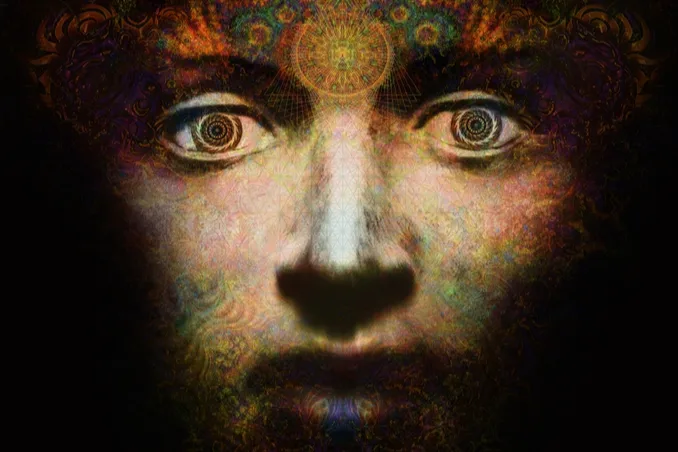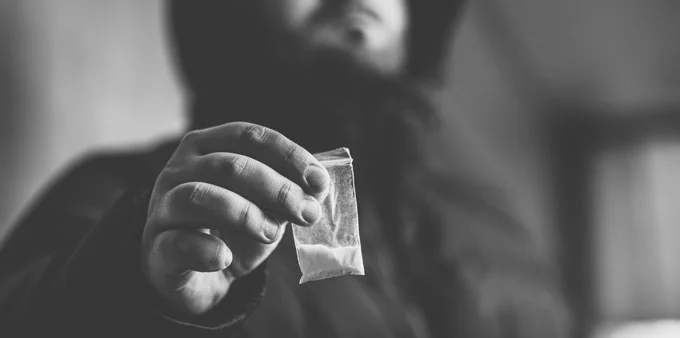Examing the So-Called Spirit Molecule
Table of Contents
Would you believe that one of the most intense hallucinogenic drugs isn’t LSD or mushrooms, which typically last a user anywhere from 8 to 12 hours? In fact, this particular psychedelic drug doesn’t even last a full hour. It doesn’t even last a half-hour.
This intense hallucinogenic, known as DMT, provides one of the most intense psychedelic experiences and only lasts about 15-minutes. Also known as the spirit molecule, this drug has been used for over a thousand years, and presently, is gaining popularity among teenagers and young adults.
Honestly, some of the facts surrounding DMT may surprise you. What is this drug known as the spirit molecule that’s taken the psychedelic drug and concert scene by storm?
What is DMT?

DMT, otherwise known as N, N-dimethyltryptamine, is derived from plants like Psychotria Viridis and Banisteriopsis caapi, which are native to South America, Mexico, and certain parts of Asia. Normally the drug is a white crystal-like powder that is ingested in several different ways, with the most popular means of ingestion normally being smoking.
At the chemical root of the drug, DMT is an agonist for most of the body’s serotonin receptors. Serotonin is a neurotransmitter within our body that substantially affects certain feelings we experience.
An alternate means of ingestion is drinking ayahuasca. This mixture, also known as ayahuasca tea, features DMT as the main ingredient. Ayahuasca is made from the two previously mentioned plants, the Psychotria Viridis and the Banisteriopsis caapi.
The former contains the DMT itself, while the latter contains the MAOI inhibitors that are needed for DMT to take effect. When they are brewed and combined, they form a potent mixture that affects the central nervous system, causing intense visual and auditory hallucinations.
It’s also been rumored that DMT exists within the human body and is created by the pineal gland. Some experts claim this chemical is released when we’re born and once during or near death. Other individuals close to the subject have made claims that it’s dispensed to cause our dreams.
There is no psychedelic evidence to back either of these statements, and nobody really knows for sure whether DMT exists within the body, or whether it may be released near death. Traces have been found during examinations, but scientists and researchers aren’t quite sure where they originated.
With scientists unable to pin down more concrete knowledge of the drug, how did our ancestors become aware of the substance? Let’s examine the history of DMT as a hallucinogenic tryptamine drug.
DMT Drug History and Uses

Shamans have used DMT during spiritual ceremonies in regions across South America for centuries. However, it took hundreds of years for the substance to surface in Western culture, where it was first synthesized. More recently, DMT has been collected from toads native to the Sonoran desert, and the harvest of organic sources of this drug from the sort of animal pictured above has become a regular source of both the substance and a community of adherents that believe ingesting DMT is the path to spiritual enlightenment.
Canadian scientist Richard Manske was successful in his efforts in 1931. Microbiologist Oswaldo Gonçalves de Lima discovered that the molecule existed naturally within certain plants in 1946. In 1956 Stephen Szara was able to extract DMT from a Mimosa Hostilis plant and ingested it himself.
During the 1950s, many scientists researched the possibility that the mental condition schizophrenia was linked to a naturally occurring chemical within the brain, possibly DMT. No concrete connections were made, and research on the drug was halted when President Nixon launched his War on Drugs campaign in the 70s.
However, in 1971, one breakthrough included scientist Julius Axelrod discovered the existence of an enzyme in the human body that was capable of producing DMT. Dr. Rick Strassman’s 2000 book DMT: The Spirit Molecule fueled a new interest in the drug, breeding a new generation of psychedelic warriors.
Despite the extensive research by independent and professional scientists and physicians, there are still strict laws regarding the use of this drug and most psychedelic drugs, with the exception of certain compounds such as salvia divinorin.
DMT Drug Laws
DMT is a Schedule 1 substance per federal law, making it illegal to use, manufacture, sell, or possess according to federal statutes and the drug enforcement administration laws nationally. Drugs under this classification are said to have no medicinal benefits or useful purpose and are often correlated with drug abuse, thus leading to the highest possible sentences for any drug.
However, a major city in Colorado and cities throughout the United States have decriminalized DMT. What does this mean for the legality of this drug and DMT drug laws for individuals?
The state of Oregon became the first to completely decriminalize the simple possession of all illegal drugs, including DMT, in an attempt to make drug abuse a public health issue, rather than a law enforcement issue. Visitors and residents of Oregon may no longer be incarcerated for having small amounts of narcotics, including psychedelic drugs, on their person. However, the sale and manufacturing of DMT are still illegal in the state.
The city of Denver was quick to follow Oregon’s lead and chose to decriminalize psychedelic drugs. This includes psilocybin mushrooms, LSD, and DMT, along with other hallucinogenic tryptamine drugs. Again, it’s still illegal to sell or manufacture said drugs.
In an ironic turn of events, Washington DC chose to deprioritize DMT, mushrooms, and mescaline substances. This means that law enforcement resources may no longer be deployed against people who use or possess these substances.
What makes this so ironic is the fact that Washington DC is our nation’s capital, and all narcotics remain illegal on a federal level, even to possess. It’s important to note that despite the legalities in these areas, an individual can still be charged for possession federally.
DMT Drug Usage
DMT is still used heavily by certain tribes in South American and Mexico. They believe the drug is intended for use as a religious or spiritual experience, with shamans being the only ones capable of administering and “leading” individuals on the trip.
Ayahuasca journeys are marketed and sold as travel packages in the United States, with consumers purchasing 5 to 7 days excursions into the wilderness on a shaman-led-DMT or ayahuasca trip. Use within the United States is quite prevalent as well.
Typically, the drug is most popular among fans of the “jam music” scene, popularized by the band the Grateful Dead. Currently, bands like Phish and Widespread Panic continue to carry the spirit of this era, drawing thousands of fans seeking to partake in a psychedelic experience.
Psychedelic drugs, and hallucinogenic tryptamine drugs, including DMT, are readily available at these concerts, typically in the parking lot area. The demographic of ages 21-45 seems to be the most common group to gravitate towards DMT use.
More recently, the drug has also found a home at rave parties and electronic clubs throughout the globe. These two genres overlap each other, mostly due to the fact that bands of each are staples at popular summer music festivals.
In 2016, 2.2 million people aged 12 and older reported using DMT at least once. Approximately 37,000 individuals aged 12-17 reported lifetime use of the drug.
What’s the hype surrounding DMT? How does it make a user feel, and how dangerous can it be?
DMT Effects

DMT is incredibly fast-acting in comparison with other drugs, with peak effects felt within 2 to 5 minutes of ingestion when smoked. However, the peak effects only last about 10-to-15 minutes, with lingering effects dissipating after about a half-hour.
Despite the short-acting high, DMT is widely considered the most intense psychedelic drug on the market. The overall effects vary from person to person and can change depending on the dose. However, these are the most typical effects of a DMT trip:
- Intense visual hallucinations, especially involving colors and patterns. Many users report full visual hallucination and the feeling of being in an “alternate universe.”
- Users express having a profound spiritual experience
- A rapid progression of moods, including happy, calm, euphoric, anxiety, and psychotic
- Many users report an encounter with “elf-like” creatures
- Distorted perception of times and places
- Out of body experiences
- Rising pulse and blood pressure
- Extremely Dilated pupils
- Auditory hallucinations
- Remembering deep, buried memories
Although DMT has a low toxicity level and is quickly metabolized by the body, the risk of overuse is more mental than physical. However, elevated heart rates and high blood pressure due to anxiety and panic from experience may put a user at risk for heart attack or stroke.
These physical risks are considered inherently low, with emphasis placed on the mental aspect of the drug. What are some of the more prominent risks associated with DMT?
DMT Drug Risks

Like most hallucinogenic drugs, a significant risk of experiencing a “bad trip” exists with DMT. This incident can be defined in several ways, depending on the user, but is outlined as a drastic increase in anxiety or panic due to the intensity of the drug. In approximately 4-4.5% of hallucinogenic users, a condition known as hallucinogen persisting perception disorder or HPPD can occur that causes symptoms to linger, indefinitely in some cases.
There have been numerous instances of users experiencing a bad trip that had long-term effects on the individual. It’s not uncommon for underlying mental conditions to manifest or development of these conditions seemingly out of nowhere after DMT use.
Ingesting DMT, or other drugs of a psychedelic nature, while in a negative state of mind puts the user at higher risk for these dangerous experiences. Additionally, individuals with preexisting mental conditions such as schizophrenia and psychosis are at the biggest risk for negative side effects.
When an individual has either of the two illnesses, they already exist in somewhat of an altered state of mind. It can be difficult for them to separate fiction and reality at times. The use of hallucinogenic drugs like DMT can further accentuate this disconnection from reality. This has the potential to cause a psychotic episode or a worsening mental condition overall.
The risks associated with DMT are elevated significantly when this drug is mixed with other substances. One of the more common cocktails, especially at concerts and rave parties, is DMT and LSD.
DMT vs. LSD
Although many psychedelic drugs hold similar characteristics, most of them hold properties that separate them from other substances in their class, as is the case with hallucinogenic tryptamine drugs. What are some of the similarities and differences between DMT and popular psychedelic LSD?
Chemical Makeup and History
Previously we discussed how DMT has derived from certain plants and can be synthesized in a lab environment. The process in which LSD is manufactured is not dissimilar, although the specifics are notably different.
LSD, or D-lysergic acid diethylamide, is derived from the fungus ergot and synthesized into a crystal-like substance. These crystals are then broken down into a liquid and placed on blotter paper, sugar cubes, or gelatin capsules.
The substance from which LSD is synthesized, ergot, is actually a fungus that grows on rye and wheat. When ingested by humans, this fungus is known to have significant psychedelic properties.
LSD was discovered in 1938 by chemist Albert Hofman. Hofman succeeded in synthesizing the drug in 1943 and subsequently ingested the drug himself.
His research led to a psychedelic boom that peaked in the 1960s when individuals like Dr. Steve Leary, Ken Kesey, and the band the Grateful Dead all personally condoned the use of LSD. The government heavily researched the drug as a treatment for several mental conditions before finally being classified as an illegal narcotic in 1968.
Ingestion/Delivery
DMT is most commonly smoked or ingested in the form of ayahuasca tea when its two parent plants are brewed. The latter, although taking more time to kick in, has noticeably longer effects than smoking.
LSD, on the other hand, must be ingested orally. In some cases, the drug can be absorbed into the skin when moisture is present in high enough quantities.
Ingesting LSD in its rawest crystal form would provide the user with too strong of a dose to realistically attempt. The drug is broken down using ether or stronger alcohol and turned into a liquid.
The liquid can be consumed directly to obtain the desired effects from this state or can be laid onto blotter paper or other surfaces. A single dose of LSD, known as a hit, can keep a user intoxicated for as long as 15-hours.
This is a marked difference from the quick-acting high of DMT. What about the specific effects the two have on the user?
Effects
The effects of the two aren’t completely dissimilar, with many users stating that DMT is an intensified version of LSD. Specific effects of LSD include:
- Large, dilated pupils
- Sweating
- Temporary increase in heart rate and body temperature
- Anxiety
- Visual and auditory hallucinations
- A loss of time and location
- Inability to chain complete thoughts together
- Disassociating
- Euphoria
Many of the effects in LSD are experienced in waves, with these effects intensifying as time progresses. LSD is accompanied by a marked “come-up” period, which usually takes place up to 45-minutes after ingestion.
This period normally plagues the user with anxiety, mostly due to the anticipation and buildup of the drug. After about an hour, the user will peak, which is when the most intense effects of the drug will be felt.
This peak period will remain for anywhere from 4 to 8 hours. Over time, the high will begin to dissipate after lasting up to 15-hours.
The most notable difference in the two’s effects is that the hallucinations of DMT appear to be more vivid and realistic. Many individuals reported being unaware that they were under the influence of a drug while high on DMT.
Risks
Both of these drugs carry a high risk for negative mental effects. Despite the differences in the overall effects and duration of these drugs, the risks associated are nearly identical.
LSD and DMT both exhibit an increased risk of heart attack or stroke caused by panic-related issues during the ingestion period. Users of each have both reported rapid heartbeat and elevated blood pressure during and after use.
Perhaps most similar is the fact that both of these drugs put a user at grave risk for developing subsequent mental impairments. Short-term psychosis is prevalent with both drugs and has the potential to develop or complicate schizophrenia In certain users.
It’s strongly recommended that individuals with preexisting mental conditions abstain from the use of both of these drugs. The normal risks associated with each increase significantly for individuals with personality disorders, depression, and schizophrenia.
Risk of Addiction
Both of these drugs share the characteristic of having the potential to create a cross-tolerance in users. This means that a long-term user of DMT may develop a tolerance to psilocybin mushrooms or LSD, and vice-versa.
Although there is no physical marker for addiction or any scientific proof that lends to the existence of a mental addiction to either drug, the risk for dependence and drug abuse is still very real. Users experiencing a pleasurable trip using either drug may continue to partake in the regular use, which could lead to cravings that put the user at risk for physical and mental harm.
These risks are substantially higher in users that are classified with a dual diagnosis. What does this mean exactly?
DMT Drug Addiction, and Dual Diagnosis

Dual diagnosis in individuals treated for DMT addiction or withdrawal is very common. The specific classification of dual diagnosis is defined as an addiction that is accompanied by one or more underlying mental conditions.
Typically, users placed under this classification have their underlying mental conditions “unmasked” by DMT. This is the manifestation of the illness or symptoms through the use of the drug. LSD users may also experience this first-time diagnosis through the use of their drug of choice.
Because hallucinogenic drugs cause users to explore their subconscious minds, illnesses may present themselves out of nowhere, with little to no warning. This can be a very traumatic experience for the user, especially with no prior indication that these conditions existed.
This condition is often brought on by what can be classified as a DMT overdose. Although no physical markers exist for this adverse event, mental signs could indicate an over-ingestion of this drug.
DMT Drug Overdose
Although there is no specific instance of “DMT drug overdose,” there is a high risk of over-using this drug to the point of adverse reactions. The average dose of DMT is 60mg; a user would have to inject nearly 90 times this amount to ingest a lethal dose.
However, most severe adverse cases and deaths surrounding DMT had underlying conditions involved. Cardiac conditions or serious mental conditions were the primary catalysts that led to these tragic instances.
An overdose could possibly be considered as any large ingestion that leads to negative, short, or long-term mental or physical effects. Typically, the effects obtained will be mental in variety, including these possible symptoms:
- Psychosis
- Anxiety
- Panic-disorder
- Rapid heart-rate
- High blood pressure
- Chest paint
- Depression
- Disassociation
These adverse reactions may or may not need the assistance of a mental health professional in order to overcome them. This is entirely dependent on the individual and severity of the case.
Because of the possibility of these adverse reactions, especially with continued use, does this make DMT a good candidate for having the potential to abuse? Any substance that is able to be consumed and clearly causes physical harm but continues to be abused can lead to an addiction. DMT is no different in this case than other substances that can lead to drug abuse.
DMT Addiction
Just because of the absence of marked physical indicators and no evidence for a chemical dependency within the brain doesn’t mean the risk of DMT addiction is any lower. Hallucinogens pose just as much risk for abuse as any other drug, even though the numbers may seem smaller.
There is a larger number of individuals who report cocaine abuse. This naturally leads to a larger number of individuals being addicted to cocaine. When you compare the numbers using the proper ratios, the odds of addiction to DMT are no higher or lower than any other illegal narcotic.
There are possible signs and indicators of DMT addiction. Individuals that display the following behavior could be potential candidates for addiction to this drug:
1. Increased Use
Individuals that consistently increase the dose of DMT over time have the potential to be classified as addicts. Initially, a user may satisfy their craving with smaller amounts of the drug. However, these small amounts no longer produce the same effect over a longer period, thus leading to higher quantities of the drug needed to produce the desired experience.
2. Unable to Refrain
When a user is unable to refrain or cut back from partaking in DMT use for extended or even short periods of time, this is a clear indication of addiction. Users may express the desire to cut back or refrain from use altogether. However, when the time comes to abstain, they are unable to do so or make excuses to prolong their recovery.
3. Time-Consuming
A DMT addict may spend large quantities of their time acquiring the drug, chasing the drug, or completing tasks that give them the funds to purchase the drug. Regardless of the specific activity, DMT may become the center of their universe, until eventually, almost every dynamic of their life is centered around using or obtaining DMT.
4. Cravings
This is one of the biggest indicators of addiction when it comes to any drug. An addict will crave the drug when they run out of it or aren’t under the influence. Additionally, the user may become irritable and have mood swings as a result of the lack of DMT. In these cases, the user may display a return to a positive attitude when the drug is finally acquired.
5. Lower Quality of Life
There will be a marked decrease in a DMT addict’s life quality in every category. They may spend more time isolating themselves and using the drug in solitude. Less time will be spent with family and friends. An addict will also neglect their duties at work and have a difficult time performing the normal role that’s asked of them.
6. Disregarding Negative Effects
When a user begins to display negative side effects, whether physical or mental and continues to use the drug, this is a clear sign of dependence or addiction. There may also be clear neglect of social and recreational hobbies, with the drug making it difficult for the person to function in society. Despite warnings or pleas to abstain, the user will continue to abuse DMT.
7. Dangerous Situations
A DMT addict will begin to use the drug in physically dangerous places. Initially, a user will only ingest the drug with a “spotter” or “babysitter” present and in a comfortable, safe place. However, once the user graduates to addiction, they may begin to use the drug in dangerous situations, such as in public or in vehicles.
8. Tolerance
A tolerance always develops in addicts, and the drug may quit working unless taken in huge quantities. This will ultimately lead to adverse physical and mental effects for the user.
A clear display of any or all of these signs indicates the presence of an addiction. What does the treatment phase of DMT addiction look like, and what options do users have?
Addiction Treatment for DMT is Available

Although addiction to DMT isn’t as prevalent as other drugs, there is still a need for treatment options for long-term users. The first step in recovery is making it through the withdrawal phase of the drug.
DMT Withdrawal
There are no physical symptoms for DMT withdrawal or detox; however, a user will still go through a very uncomfortable process of initial recovery. The properties of DMT addiction and withdrawal are completely psychological, and the detox process can consist of the following elements, as the first and required component of addiction treatment:
- The user may be confused, irritable, and restless during the initial phase of detox. There could be a blur between reality and fantasy or even a clear paranoia displayed by the user.
- After a few days of the initial withdrawal symptoms, the user may shift more towards a feeling of depression due to the body’s inability to reap the benefits of serotonin. DMT increases serotonin, so sudden abstinence leads to lower levels of this chemical produced by the body.
- After a week to ten days, the user may begin to experience relief from the acute withdrawal symptoms. It’s recommended that after this stage, the user engages in inpatient rehab treatment.
The steps mentioned above can be taken on in a private, in-home setting or at a medically assisted inpatient rehab facility. Historically, the patient has a higher chance of success in a residential rehab setting.
During the initial detox process, professionals are able to prescribe certain medications such as antidepressants or low-doses of anti-anxiety or even blood pressure medication to alleviate the negative effects. Afterward, the patient will participate in individual and group therapy as recommended by the physician at the rehab facility.
Inpatient Rehab for DMT Drug Abuse
During a patient’s stint at a live-in rehab facility, the individual will benefit from one-on-one counseling sessions with a psychiatrist. This can lead to the classification of dual diagnosis or uncovering underlying conditions, resulting in the treatment of the true cause of addiction.
During rehab and with any recovery, it’s important to treat the cause and not the symptoms. This is why in many cases, participation in a rehab setting is in the best interests of the user for long-term results.
The user will also have the option of participating in group therapy sessions where they can engage with their peers who are in similar situations. This can be beneficial in helping a patient to understand that they are not alone in their addiction, nor at any point in addiction treatment.
During counseling sessions, the psychiatrist may choose to start a normal regimen of certain psychological medications to assess the short-term effectiveness of this type of treatment. Physicians may or may not choose to continue to prescribe these medications upon the patient being discharged.
What does the time after rehab look like for a DMT abuser? How do they ensure success in the long term?
Continued Services
It’s recommended that all patients who complete rehab should continue the services on an outpatient basis. At the very least, the individual should consider attending peer therapy sessions to ensure continued success.
There is substantial evidence to support the fact that continued services lead to higher chances of continued abstinence and recovery. Regardless of whether the primary care physician continues the use of psychological drugs, it’s important to note that these should never be a long-term solution for a user.
The existence of a strong support structure is also important. Any time a user seeks to maintain abstinence from any substance, having the proper support is always the first and most important element of recovery.
If you’re struggling, please reach out now to the experienced, professional team at Find Addiction Rehabs now to get a range of options for care, addiction treatment resources nationwide, and a compassionate perspective on the potential for lasting recovery.
Brandon is a highly skilled content writer and behavioral health marketer with over a decade of experience. In his own words: in my work with Find Addiction Rehabs, I have dedicated my expertise to a cause close to my heart – substance abuse recovery. Through my passion for the field, I’ve successfully compiled a track record of crafting compelling content that educates, inspires, and supports those on their recovery journeys.

